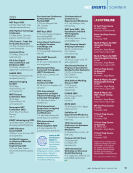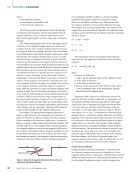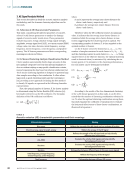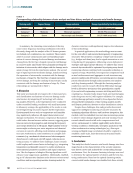11. Li, T., Y. Li, T. Li, X. Hu, Y. Li, J. Liao, L. Mei, Y. Hou, B. Yang, and J.
Gu. 2025. “Experimental study on acoustic emission characteristics and
damage-failure process of seawater sea-sand ultra-high-performance
concrete under uniaxial compression.” Case Studies in Construction Mate-
rials 22: e04260. https://doi.org/10.1016/j.cscm.2025.e04260.
12. Prem, P. R., M. Verma, and P. S. Ambily. 2021. “Damage characteri-
zation of reinforced concrete beams under different failure modes using
acoustic emission.” Structures 30: 174–187. https://doi.org/10.1016/j.
istruc.2021.01.007.
13. Ren, H., T. Li, J. Ning, and S. Song. 2023. “Analysis of damage charac-
teristics of steel fiber-reinforced concrete based on acoustic emission.”
Engineering Failure Analysis 148:107166. https://doi.org/10.1016/j.
engfailanal.2023.107166.
14. Wang, Y., L. J. Chen, C. Yan, N. Wang, J. Gu, Z. Z. Wang, and H. T. Zhao.
2020. “Study on Multifractal Characteristics of Acoustic Emission Sequence
of Concrete with Different Steel Fiber Content under Uniaxial Tension.”
Materials Evaluation 78 (9): 1045–54. https://doi.org/10.32548/2020.
me-04135.
15. Shen, W., H. Bai, F. Wang, C. Li, and F. Du. 2024. “Acoustic Emission
characteristics and damage evolution of Concrete-Encased CFST columns
under compressive load.” Engineering Fracture Mechanics 311: 110578.
https://doi.org/10.1016/j.engfracmech.2024.110578.
16. Chang, J., Y. Yao, K. Liu, Y. Wang, M. Yan, and Y. Bao. 2024. “Damage
assessment of concrete beams repaired with basalt fiber-reinforced
polymer sheets through digital image correlation and acoustic emission.”
Case Studies in Construction Materials 20: e03044. https://doi.org/10.1016/
j.cscm.2024.e03044.
17. Salighehdar, A., Y. Liu, D. Bozdog, and I. Florescu. 2017. “Cluster
analysis of liquidity measures in a stock market using high frequency
data.” Social Science Electronic Publishing. https://doi.org/10.5281/
zenodo.808452.
18. Jun, W., W. Shitong, and D. Zhaohong. 2012. “Several issues in cluster
analysis research.” Journal of Control and Decision (3): 321–28. https://doi.
org/10.13195/j.cd.2012.03.4.wangj.013.
19. Lin, Z., D. Faning, D. Weihua, and Z. Le. 2019. “Analysis on meso-scale
damage of concrete using CT images and K-Means clustering algorithm.”
Journal of Hydroelectric Engineering 38 (5): 37–45. https://doi.org/10.11660/
slfdxb.20190505.
20. Li, W., J. Cheng, P. Jiang, and Y. Liu. 2023. “Acoustic Emission Cluster
Analysis of Composite Laminates with Different Interfacial Fiber Orienta-
tions Based on Gaussian Mixture Model.” Russian Journal of Nondestruc-
tive Testing 59 (3): 276–91. https://doi.org/10.1134/S1061830922601143.
21. Wei, H., B. Xu, J. Li, J. Zheng, Y. Liu, and R. Lu. 2025. “Effect of
temperature on fatigue damage evolution of asphalt mixture based on
cluster analysis and acoustic emission parameters.” Engineering Fracture
Mechanics 317: 110954. https://doi.org/10.1016/j.engfracmech.2025.110954.
22. Yu, X., S. Montrésor, M. Bentahar, and C. Mechri. 2023. “Cluster
analysis of acoustic emission signals for the damage pattern recognition of
polymer concrete.” Applied Acoustics 211: 109533. https://doi.org/10.1016/j.
apacoust.2023.109533.
23. Fang, Y., Z. Yan, T. Xuedong, and G. Baolan. 2003. “K-means algorithm
based on improved density peak algorithm using genetic algorithm to
achieve k-value selection in k-means clustering algorithm.” Computer
Technology and Development 13 (1): 3. https://doi.org/10.3969/j.issn.1673-
629X.2003.01.011.
24. Cui, X., and E. Yan. 2020. “Fuzzy C-Means Cluster Analysis Based
on Variable Length String Genetic Algorithm for the Grouping of Rock
Discontinuity Sets.” KSCE Journal of Civil Engineering 24 (11): 3237–46.
https://doi.org/10.1007/s12205-020-2188-2.
25. Hongbo, S., B. Azhen, and Z. Lijun. 2018. “K-means algorithm based
on improved density peak algorithm.” Statistics &Decisions (18): 20–24.
https://doi.org/10.13546/j.cnki.tjyjc.2018.18.004.
26. Yudong, Z., and W. Lenan. 2009. “Stock market prediction of S&P 500
via combination of improved BCO approach and BP neural network.”
Expert Systems with Applications 36 (5): 8849–54. https://doi.org/10.1016/j.
eswa.2008.11.028.
27. Fang, L., and L. Hongyun. 2011. SPSS Data Statistics and Analysis.
M Tsinghua University Press.
28. Zhang, Z.-Q., G.-L. Li, H.-D. Wang, B.-S. Xu, and Z.-Y. Piao. 2012.
“Acoustic emission wavelet analysis of coating during contact fatigue
damage process.” Cailiao Gongcheng/Journal of Materials Engineering
2 (9): 48–53. https://doi.org/10.3969/j.issn.1001-4381.2013.06.001 [in
Chinese].
29. Domingues, P., P. Sampaio, and P. M. Arezes. 2000. “Characterization
of interfacial properties of composite materials by acoustic emission.”
Polymer Composites 21 (4): 595–604. https://doi.org/10.1002/pc.10215.
ME
|
AXIALTENSION
52
M AT E R I A L S E V A L U AT I O N • M AY 2 0 2 5
Gu. 2025. “Experimental study on acoustic emission characteristics and
damage-failure process of seawater sea-sand ultra-high-performance
concrete under uniaxial compression.” Case Studies in Construction Mate-
rials 22: e04260. https://doi.org/10.1016/j.cscm.2025.e04260.
12. Prem, P. R., M. Verma, and P. S. Ambily. 2021. “Damage characteri-
zation of reinforced concrete beams under different failure modes using
acoustic emission.” Structures 30: 174–187. https://doi.org/10.1016/j.
istruc.2021.01.007.
13. Ren, H., T. Li, J. Ning, and S. Song. 2023. “Analysis of damage charac-
teristics of steel fiber-reinforced concrete based on acoustic emission.”
Engineering Failure Analysis 148:107166. https://doi.org/10.1016/j.
engfailanal.2023.107166.
14. Wang, Y., L. J. Chen, C. Yan, N. Wang, J. Gu, Z. Z. Wang, and H. T. Zhao.
2020. “Study on Multifractal Characteristics of Acoustic Emission Sequence
of Concrete with Different Steel Fiber Content under Uniaxial Tension.”
Materials Evaluation 78 (9): 1045–54. https://doi.org/10.32548/2020.
me-04135.
15. Shen, W., H. Bai, F. Wang, C. Li, and F. Du. 2024. “Acoustic Emission
characteristics and damage evolution of Concrete-Encased CFST columns
under compressive load.” Engineering Fracture Mechanics 311: 110578.
https://doi.org/10.1016/j.engfracmech.2024.110578.
16. Chang, J., Y. Yao, K. Liu, Y. Wang, M. Yan, and Y. Bao. 2024. “Damage
assessment of concrete beams repaired with basalt fiber-reinforced
polymer sheets through digital image correlation and acoustic emission.”
Case Studies in Construction Materials 20: e03044. https://doi.org/10.1016/
j.cscm.2024.e03044.
17. Salighehdar, A., Y. Liu, D. Bozdog, and I. Florescu. 2017. “Cluster
analysis of liquidity measures in a stock market using high frequency
data.” Social Science Electronic Publishing. https://doi.org/10.5281/
zenodo.808452.
18. Jun, W., W. Shitong, and D. Zhaohong. 2012. “Several issues in cluster
analysis research.” Journal of Control and Decision (3): 321–28. https://doi.
org/10.13195/j.cd.2012.03.4.wangj.013.
19. Lin, Z., D. Faning, D. Weihua, and Z. Le. 2019. “Analysis on meso-scale
damage of concrete using CT images and K-Means clustering algorithm.”
Journal of Hydroelectric Engineering 38 (5): 37–45. https://doi.org/10.11660/
slfdxb.20190505.
20. Li, W., J. Cheng, P. Jiang, and Y. Liu. 2023. “Acoustic Emission Cluster
Analysis of Composite Laminates with Different Interfacial Fiber Orienta-
tions Based on Gaussian Mixture Model.” Russian Journal of Nondestruc-
tive Testing 59 (3): 276–91. https://doi.org/10.1134/S1061830922601143.
21. Wei, H., B. Xu, J. Li, J. Zheng, Y. Liu, and R. Lu. 2025. “Effect of
temperature on fatigue damage evolution of asphalt mixture based on
cluster analysis and acoustic emission parameters.” Engineering Fracture
Mechanics 317: 110954. https://doi.org/10.1016/j.engfracmech.2025.110954.
22. Yu, X., S. Montrésor, M. Bentahar, and C. Mechri. 2023. “Cluster
analysis of acoustic emission signals for the damage pattern recognition of
polymer concrete.” Applied Acoustics 211: 109533. https://doi.org/10.1016/j.
apacoust.2023.109533.
23. Fang, Y., Z. Yan, T. Xuedong, and G. Baolan. 2003. “K-means algorithm
based on improved density peak algorithm using genetic algorithm to
achieve k-value selection in k-means clustering algorithm.” Computer
Technology and Development 13 (1): 3. https://doi.org/10.3969/j.issn.1673-
629X.2003.01.011.
24. Cui, X., and E. Yan. 2020. “Fuzzy C-Means Cluster Analysis Based
on Variable Length String Genetic Algorithm for the Grouping of Rock
Discontinuity Sets.” KSCE Journal of Civil Engineering 24 (11): 3237–46.
https://doi.org/10.1007/s12205-020-2188-2.
25. Hongbo, S., B. Azhen, and Z. Lijun. 2018. “K-means algorithm based
on improved density peak algorithm.” Statistics &Decisions (18): 20–24.
https://doi.org/10.13546/j.cnki.tjyjc.2018.18.004.
26. Yudong, Z., and W. Lenan. 2009. “Stock market prediction of S&P 500
via combination of improved BCO approach and BP neural network.”
Expert Systems with Applications 36 (5): 8849–54. https://doi.org/10.1016/j.
eswa.2008.11.028.
27. Fang, L., and L. Hongyun. 2011. SPSS Data Statistics and Analysis.
M Tsinghua University Press.
28. Zhang, Z.-Q., G.-L. Li, H.-D. Wang, B.-S. Xu, and Z.-Y. Piao. 2012.
“Acoustic emission wavelet analysis of coating during contact fatigue
damage process.” Cailiao Gongcheng/Journal of Materials Engineering
2 (9): 48–53. https://doi.org/10.3969/j.issn.1001-4381.2013.06.001 [in
Chinese].
29. Domingues, P., P. Sampaio, and P. M. Arezes. 2000. “Characterization
of interfacial properties of composite materials by acoustic emission.”
Polymer Composites 21 (4): 595–604. https://doi.org/10.1002/pc.10215.
ME
|
AXIALTENSION
52
M AT E R I A L S E V A L U AT I O N • M AY 2 0 2 5













































































